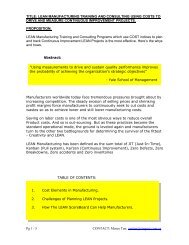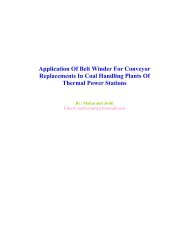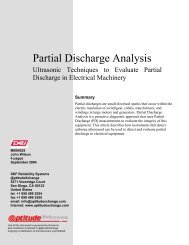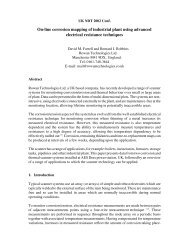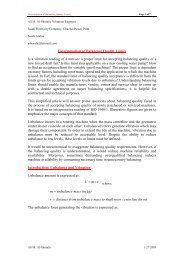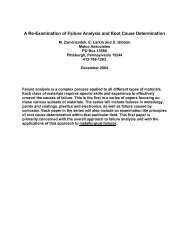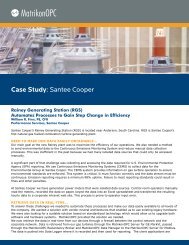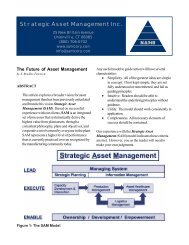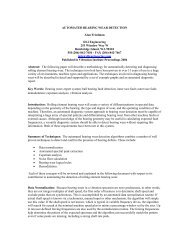Rolling Element Bearing Acceptance and Life Testing (BAT)
Rolling Element Bearing Acceptance and Life Testing (BAT)
Rolling Element Bearing Acceptance and Life Testing (BAT)
You also want an ePaper? Increase the reach of your titles
YUMPU automatically turns print PDFs into web optimized ePapers that Google loves.
4. After averaging of the results of the 4 strikes, the analyzer will show the Transfer Function<br />
of the bearing represented as represented in a fig.4.This Transfer Function will contain the<br />
modal parameters (Modal frequency, Modal mobility, <strong>and</strong> Modal damping) for the first<br />
mode of vibration that will be extracted by (<strong>BAT</strong>) software.<br />
5. Steps 1-4 above are to be repeated for All bearings to be tested.<br />
6. <strong>BAT</strong> software will make the necessary calculations <strong>and</strong> will produce a report containing the<br />
modal parameters of all tested bearings together with their expected lives relative to the<br />
Reference <strong>Bearing</strong>.<br />
B. Automatic <strong>Testing</strong> (Fig2):<br />
1. Each bearing is to be clamped on the PVC collect rested on the bearing carriage which is<br />
moving (without friction) on the air pad.<br />
2. The motor is to be switch on, this will cause the bearing carriage to move a way from the<br />
hammer carriage.<br />
3. In its way, the bearing carriage will press the limit switch 1 which will release the motor<br />
power <strong>and</strong> will send the bearing carriage for- word to impact with the hammer tip situated<br />
on the other end of the air pad<br />
4. While the bearing is striking the hammer, the bearing carriage will press limit switch 2<br />
which will energize the motor again to pull the bearing carriage away from the striking<br />
position.<br />
5. Steps 3,4 are repeated many times (4 or more) governed by the counter circuitry given in<br />
fig.3 to average the results.<br />
6. The switches <strong>and</strong> the motor drive circuitry are given also in fig.3.<br />
7. Same procedure of signal detection, acquisition, Modal Parameter calculation <strong>and</strong> relative<br />
bearing life calculation as in (A) above, is used (step 4 to step 6).<br />
Rubber B<strong>and</strong><br />
Impact Hammer<br />
Rigid<br />
Support<br />
<strong>Bearing</strong><br />
Under Test<br />
Accelerometer<br />
Excitation signal<br />
(Channel 1)<br />
Figure (1)<br />
Response signal<br />
(Channel 2)



